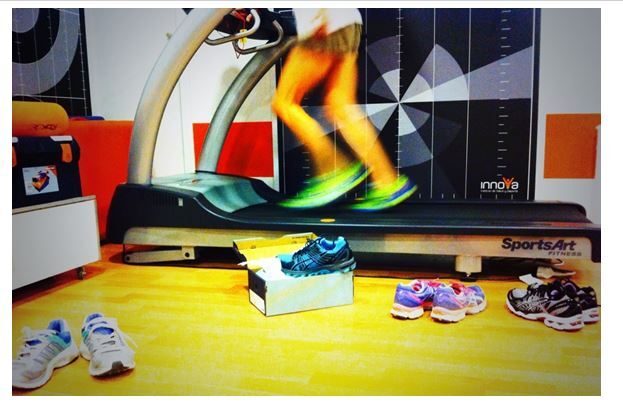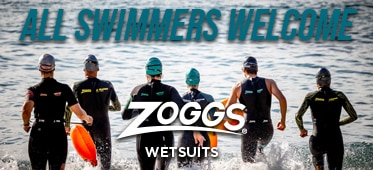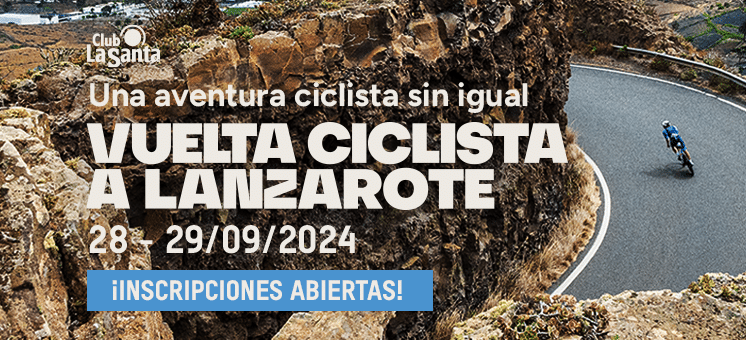How to choose running shoes?
Every year, the 80% of athletes who run on foot are injured and one of the most frequent causes of injury is to wear shoes that are inappropriate to the type of tread.
Our collaborator Marian Sánchez He tells us in this article what to look for when choosing running shoes.
Although it's something you do daily or several times a week for several months / years, you've probably never stopped to watch how you run, and how is the support of your foot on the ground when running ... and you should know that this is the most important that you must take into account to buy some shoes and that are appropriate for you.
Each year, the 80% of athletes who run on foot are injured (yes, among triathletes this statistic is equally high) and one of the most frequent causes of injury (among others) is to bring inappropriate shoes to the type of tread.
What are the types of footprints?
We must forget about the typical and outdated "supinator or pronator" since it is more than proven that this is not so important nor is it so related to the risk of injury. It gives us much more information to see how the foot supports watching the athlete run in the lateral plane.
Basically3 xisten basic forms of foot support on the ground when running: heel counter, flat foot and metatarsal. Depending on the support we have of the foot, it already guides us to what type of shoe we should use in terms of cushioning and drop (the drop is the difference in height of the heel with the front part of the shoe):
Heel tread: in principle it is advisable to choose shoes with a cushion that "protects" the heel of the impact on the ground, and with a drop that can also be raised for the same reason.
How much cushioning is necessary?
Well, everyone who needs, there are no standards or recommendations closed, because in all this influence the individualities of each and the phase of the season in which we are, we are only giving general brushstrokes to have some clear concepts.
Half-foot tread:
here the first contact of the heel in the ground is eliminated when running, so it does not make much sense to choose shoes with a high drop (6-12mm). It is much more advisable to be able to run in a much more comfortable way to choose shoes with a drop of 4mm or less, with which we will have a sole of the shoe that is almost flat in terms of height difference of the heel and will allow the foot to fall into the shoe. floor with its natural way of doing it. And cushioning? As before ... the necessary.
Metatarsal tread:
if we run metatarsal, it means that only the front part of our foot touches the ground when running, so that part is what hits the ground, which absorbs the loads of our body and which has to accommodate all the weight together with the arch of the foot that in this case remains in the air.
It is rare to find triathletes of medium or long distance running like this, since this type of tread is purely for speed races or very short competitions, it is not an efficient tread to run many kilometers, since it overloads all the posterior structures of the foot and musculatura plantiflexora (twins, soleus and posterior tibial).
Still, there are athletes who run in this way, and the way to adapt as much as possible the footwear to your footprint is to try to remove all possible weight from the back of the shoe, that is, the less drop better (0-4mm it is a good option) and try to limit the cushioning to the minimum necessary for the distance to travel, in order that the shoe weighs as little as possible and the foot has to bear the least extra load coming from the shoe.
How much is the cushioning needed for the shoe? How do I choose it?
As I have said before, this is a very individual issue and in which many variables influence, mainly the time (years) that it has been doing running on foot, the weekly volume that is run (this will depend on the test that we are preparing ) the number of injuries suffered in recent months, the footwear with which you are used to running ... it is very difficult to give a general recommendation, but when we talk about injury prevention (the performance is something else and I leave it for the specialists in this field) what is recommended is to take the minimum damping necessary to run.
Both the damping defect and the excess, have proven to overload different structures of our body that in the long run make us tend to injure ourselves more.
In the short term, where we must pay more attention is when we want to reduce the cushioning, since this is a process that must be carried out very little by little, reducing the sole of the shoes greatly increases the load that the shoes have to bear. structures of the foot, and it can be dangerous if we exceed the mechanical limit that we are capable of supporting.
El Minimalism and running with lighter shoes have many positive effects demonstrated in any runner, such as the ease to improve the running technique, the reduction of impacts on the joints of all the lower limbs, improvement of proprioception and general body perception, increased strength of all foot structures (which will eventually result in structures that are much less prone to injury)
The only problem that has everything this process is that you have to do it very slowly and be very patient, and sometimes that's what more work costs and we surpass (= injury). You have to be very clear about all this and be willing to not be in a hurry when we want to make a change of shoes of this type and get advice as best as possible before doing so.
Regarding what we said at the beginning about being supinator or pronator, I have given little importance because it is not what should make the difference when buying a shoe, as it is something virtually unimportant. Pronation is a normal gesture of accommodation of the foot on the floor at the time of running. And there is a lot of scientific evidence showing that the pronation of the foot has almost no relation to the risk of injury.
In addition, it is also more than proven that the shoes with pronation control, foot arch control, etc. They have no real effect on the foot ... we only see that the inner part of the shoe is less deformed, but the foot inside the shoe continues practically the same as it does with a neutral shoe (although we do not see it). And in the case of the shoes for supinadores it happens the same.
Recommendation:
We should not be afraid of pronation, it is a normal and physiological movement performed by our feet in order to adapt to the soil. You only have to correct it when we really have a very marked overpronation and that after evaluating it correctly, let's see that it causes real problems
It is always preferable to choose a neutral shoe regardless of the arch of the foot we have, and if we need some type of correction, do it with a specific template for us, which is the only thing that can really help our foot.
The summary
Although a priori go shopping for shoes seems easy, to know that we really have made the right purchase must have many variables in mind (and not just look at the aesthetics and colors).
The most basic thing to avoid mistakes is to know how we run, and not let ourselves be guided only by the shoes recommended by a friend or partner that he uses and who are doing well, since we have seen that many individual variables influence that we will have to study to assess if that partner looks like us and his recommendation of what he uses to run may be useful.
As it is something common and that happens to us all, to assess the recommendation of a partner, in general we will have to take into account 3 great considerations:
1 If you are an experienced or novice runner with respect to us. The load of Km that we carry is one of the great points to value when someone gives us a recommendation of this type.
2 The number of injuries in the last months / years of our partner. Value this very well before paying attention to anyone, or at least before considering that recommendation as the best.
3. Our friend's way of running, since it is essential that it be similar in order to accept this advice when buying a shoe. By running, I mean taking into account the three major groups that we talked about at the beginning: attacking the foot on the ground with the heel, flat foot or metatarsal.
Knowing all this, we already have more variables and knowledge to try to choose the most suitable shoes for us, to avoid as much as possible the dreaded injuries and to be able to run as long as possible ... enjoying the triathlon.
Further information: institutoinnova.net
There are no previous results.



































